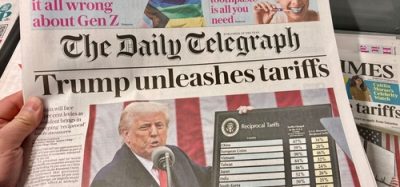Dissecting the National Food Strategy
- Like
- Digg
- Del
- Tumblr
- VKontakte
- Buffer
- Love This
- Odnoklassniki
- Meneame
- Blogger
- Amazon
- Yahoo Mail
- Gmail
- AOL
- Newsvine
- HackerNews
- Evernote
- MySpace
- Mail.ru
- Viadeo
- Line
- Comments
- Yummly
- SMS
- Viber
- Telegram
- Subscribe
- Skype
- Facebook Messenger
- Kakao
- LiveJournal
- Yammer
- Edgar
- Fintel
- Mix
- Instapaper
- Copy Link
Posted: 12 August 2020 | Chris Elliott | No comments yet
In his latest column, Professor Chris Elliott lays bare his views on Henry Dimbleby’s National Food Strategy.


I decided to let the dust settle a little before writing about the recently published and much-awaited National Food Strategy. To the surprise of many, it was not actually a national food strategy, but rather a document which exposed the massive issues we face as a society due to our dreadful food system. Bleak, honest and accurate are three words which sum up my views on the picture that was painted of how bad things really are.
It is also important to note the context of publishing such a document in the maelstrom caused by COVID-19 and our departure from the European community. Both – in different ways – will have massive impacts on many aspects of our national food system in the short-term and long-term. It is not surprising that Henry Dimbleby, author of the report, has his sights on both of these very big ticket items and his recommendations are very much geared towards addressing some of the big challenges we are facing as a nation.


The Brexit portion of the document deals with the three Ss: sovereignty, standards and scrutiny. For this part of the report I can only imagine Dimbleby is walking the thinnest of tight ropes. There has been much in the press about our future trade agreements with Europe and beyond and how these will undoubtedly mean that food standards will become something that will be subject to barter.
Dimbleby defends the Government stance of not having legislation that would require other countries to meet our own standards for food we import from them. He argues for a system of tariffs based on the way that food is produced in terms of sustainability, animal welfare, etc. To me, this seems a reasonable way forward, but how such metrics can be standardised themselves and then verified is an enormous challenge. Without total transparency of how food is produced at home and aboard this will be a struggle and an enormous opportunity for fraud.
I have read quite a few pieces in the press from various groups and organisations providing their views on the report. I think it is fair to say they are mixed in terms of being positive or negative. I also had a number of ‘quiet conversations’ with some stakeholders and the feedback tends to fall more on the negative side of the fence. However, what we cannot forget is that any changes in our national food system will bring about winners and losers, and many businesses and Government departments all have vested and very different interests.
The ultimate winners must be the citizens of the UK – all 67 million of us – and we must not lose sight of this, nor the substantial changes that will be needed to make this happen.
Part two of the National Food Strategy will be published in early 2021 and I do hope this details exactly what changes are needed and how these will be delivered. The tightrope will get even thinner and the need for the Government to fully support the strategy will ultimately decide its fate.








